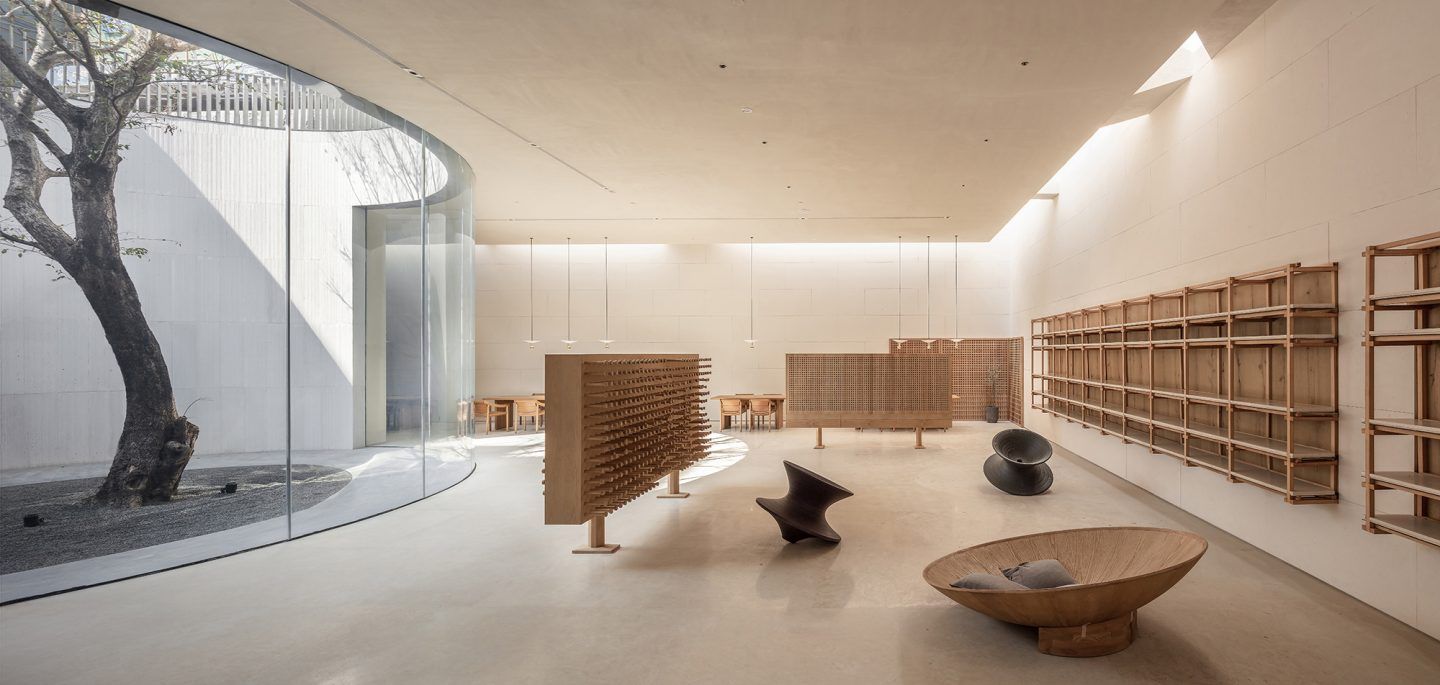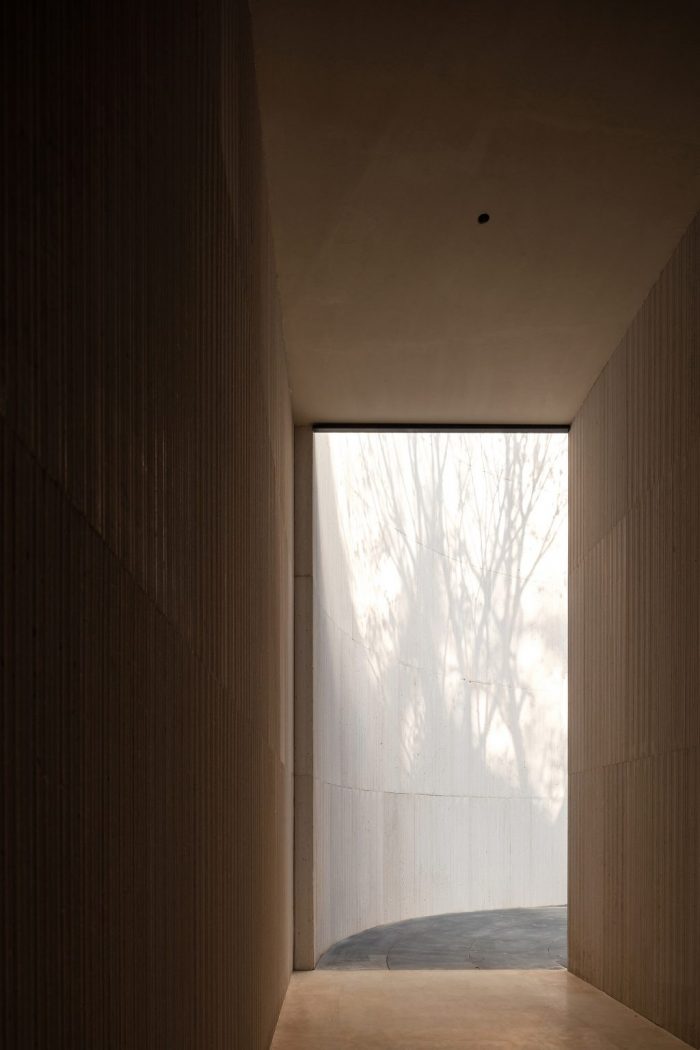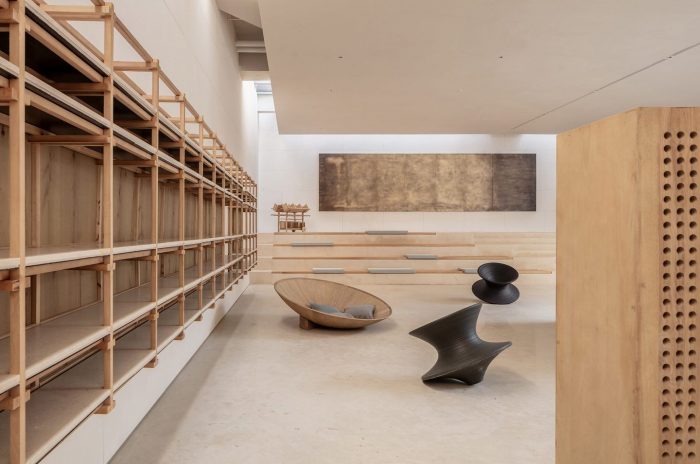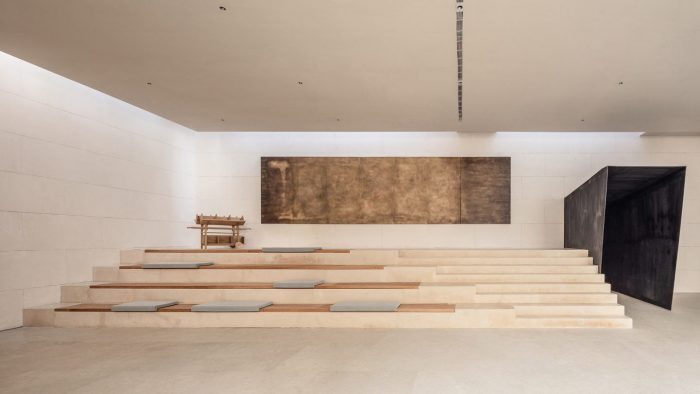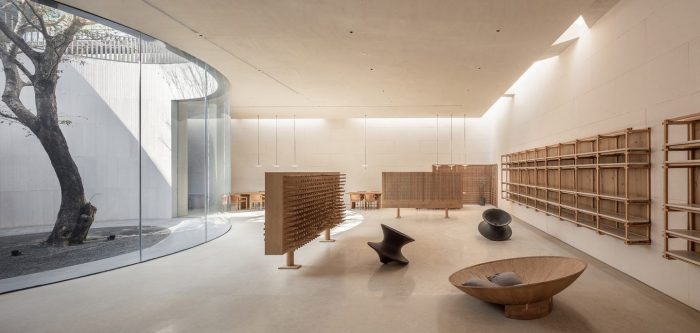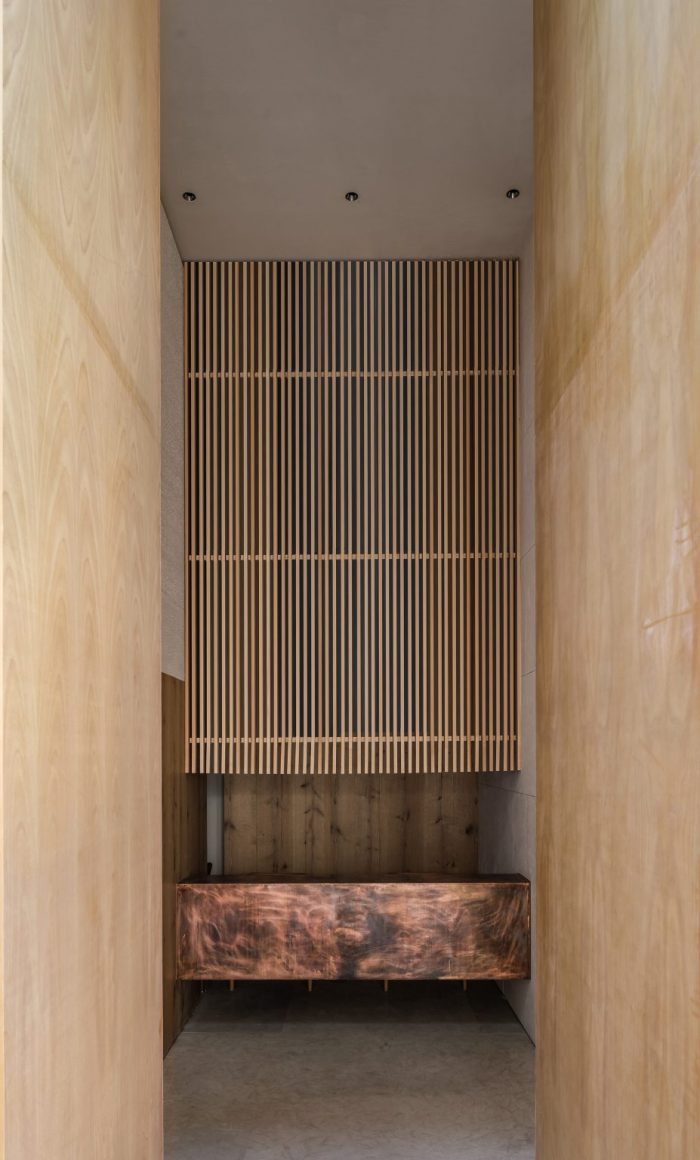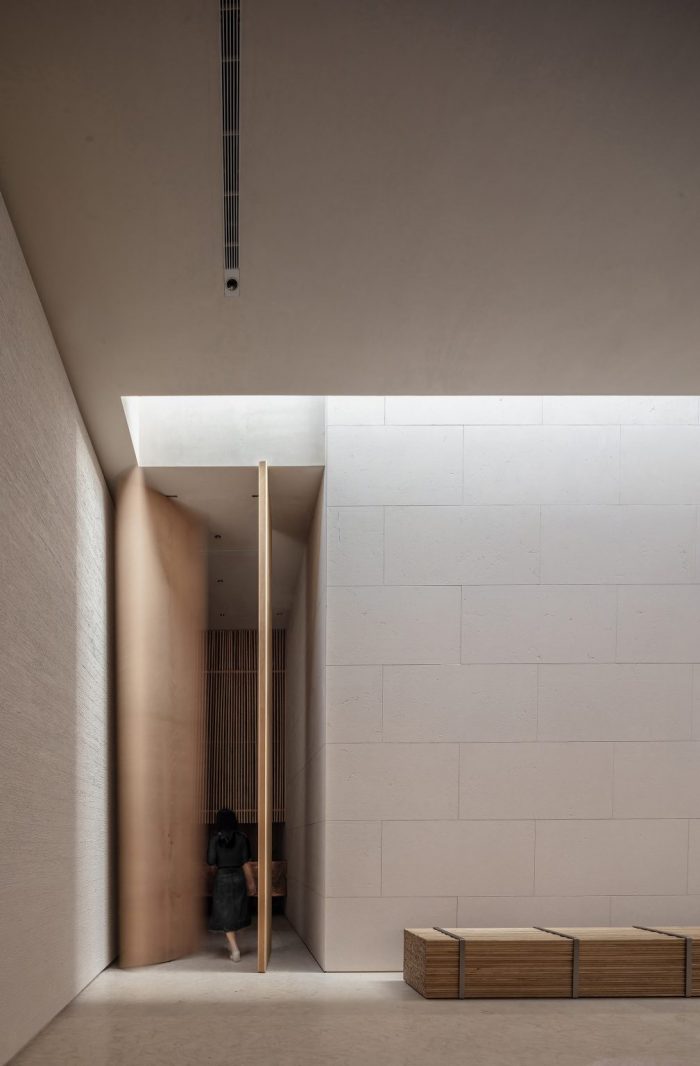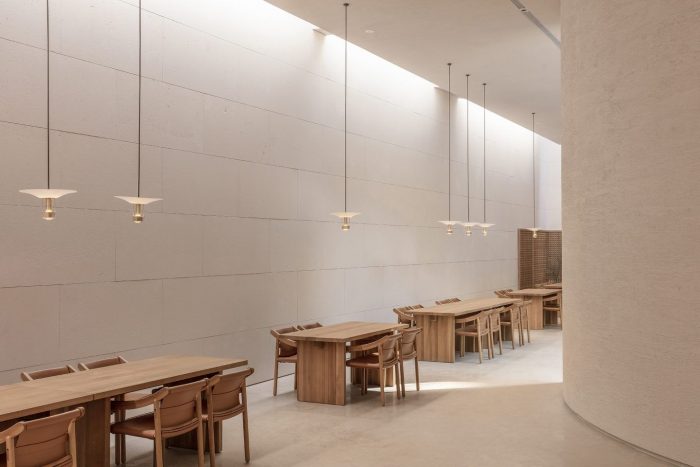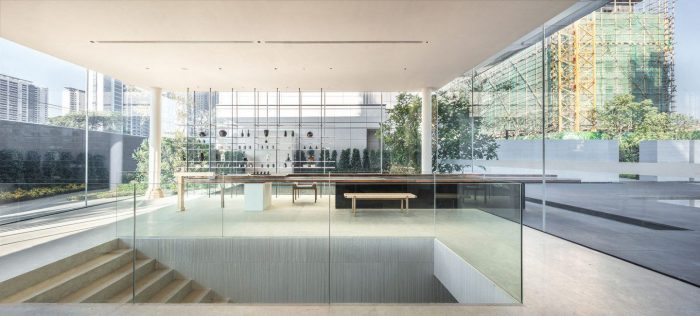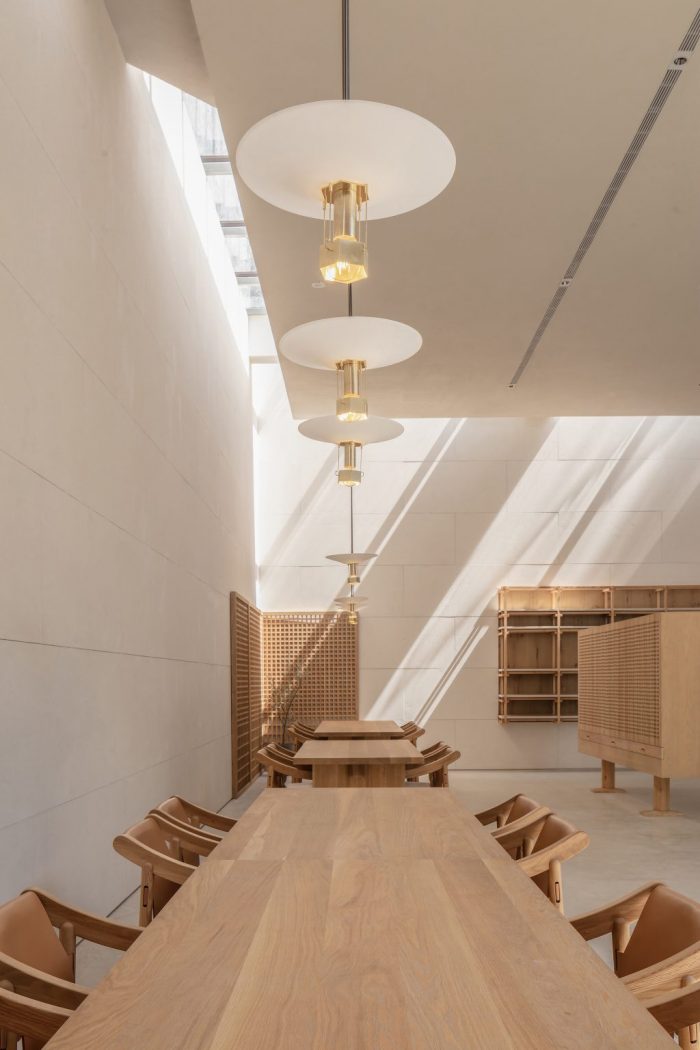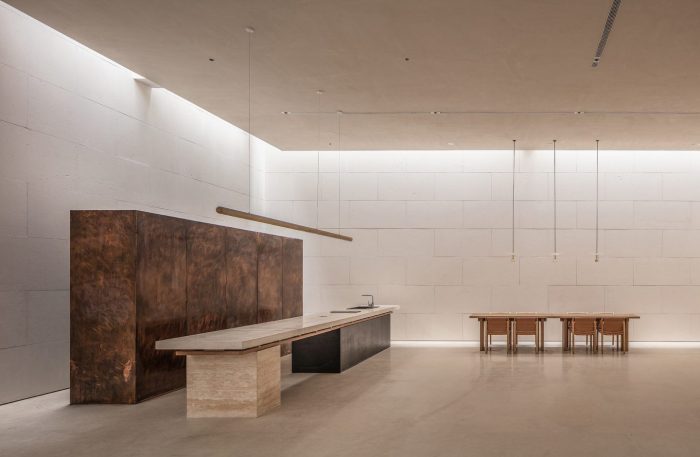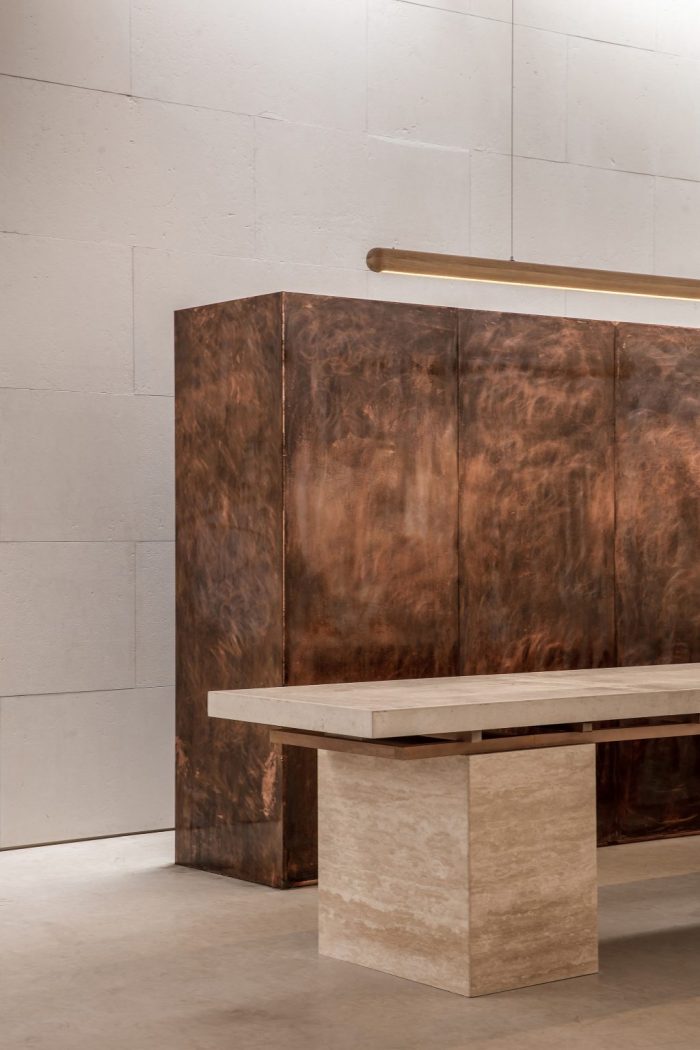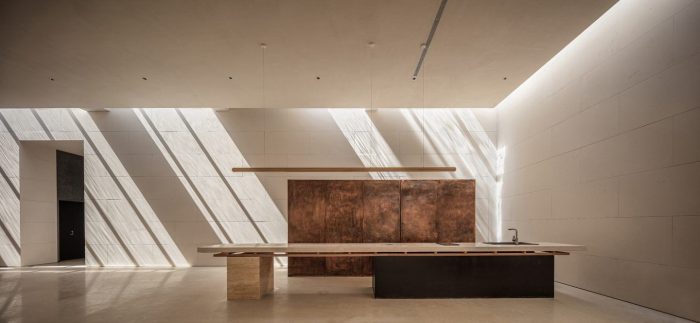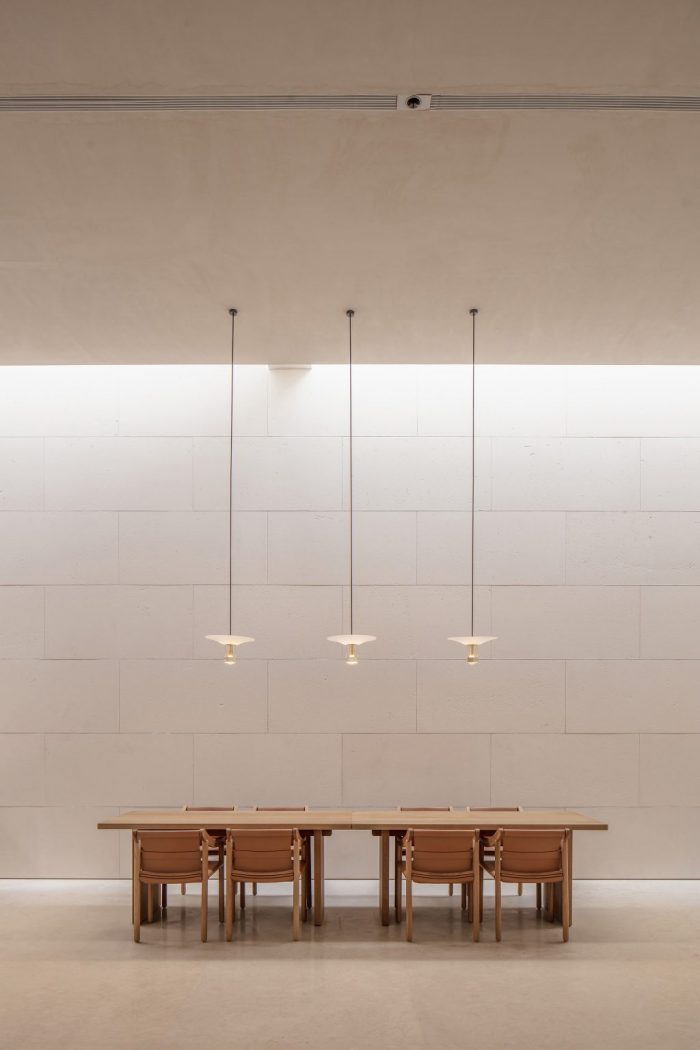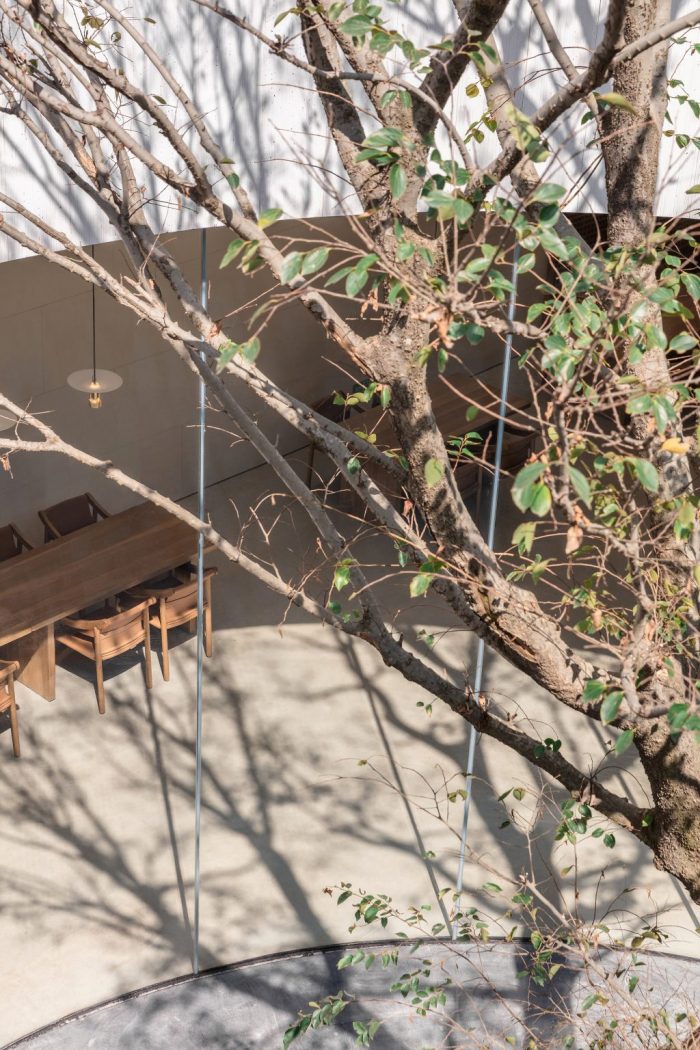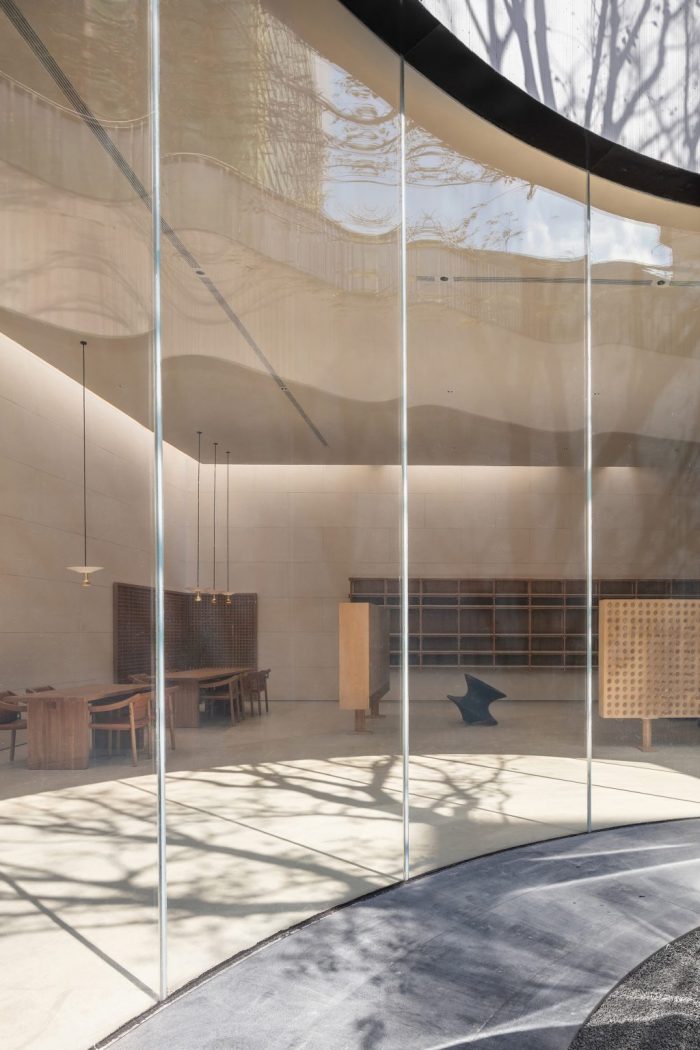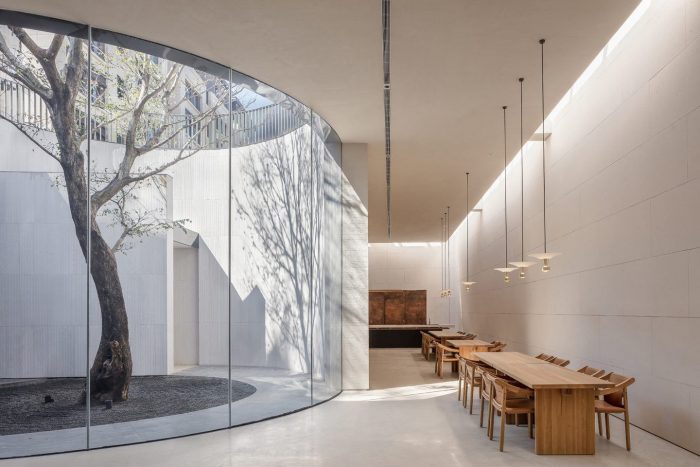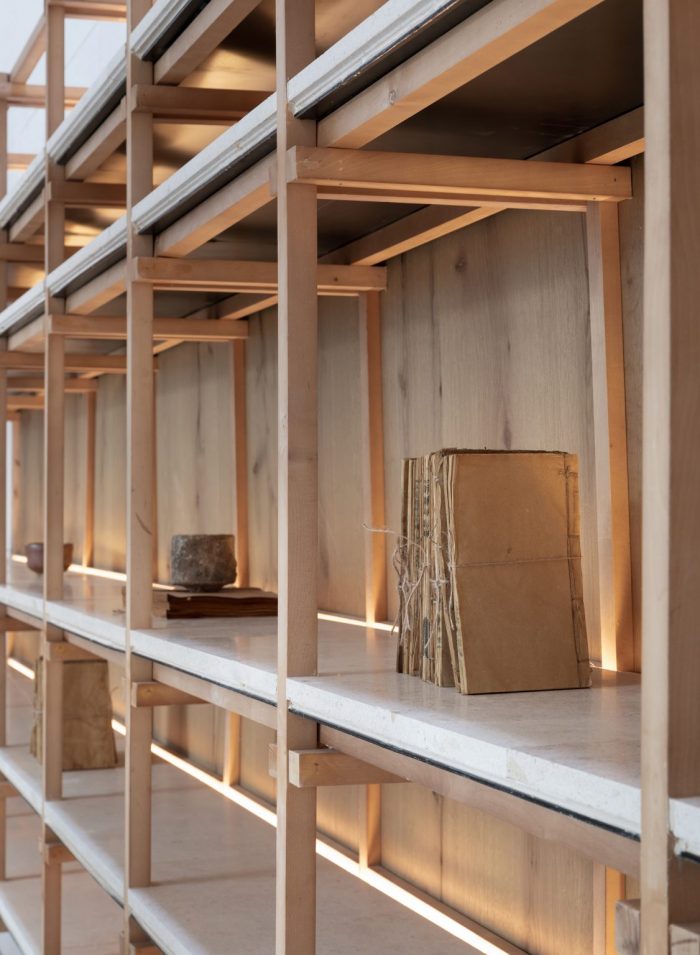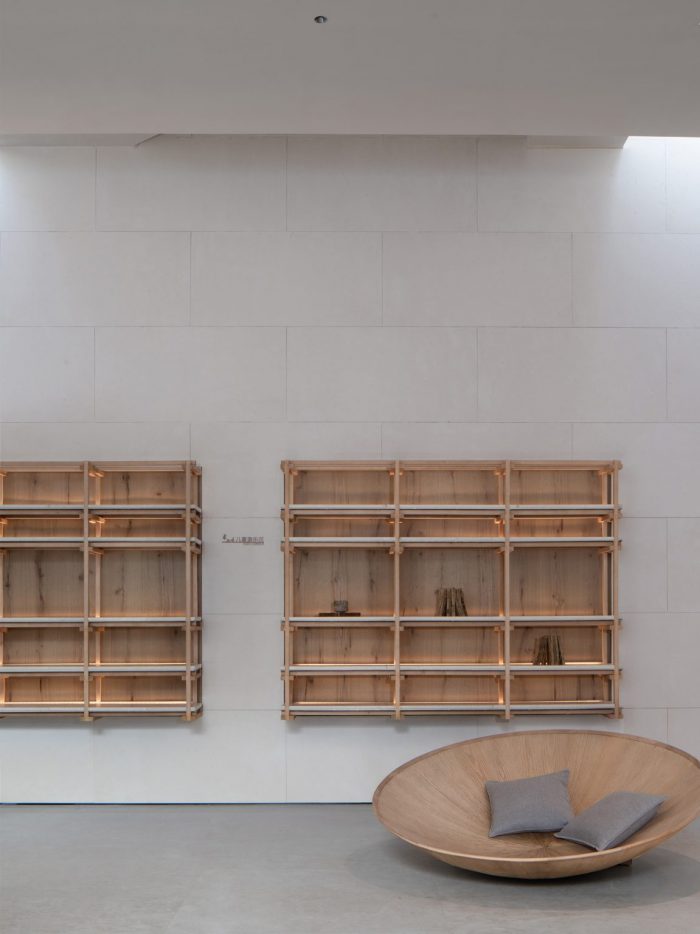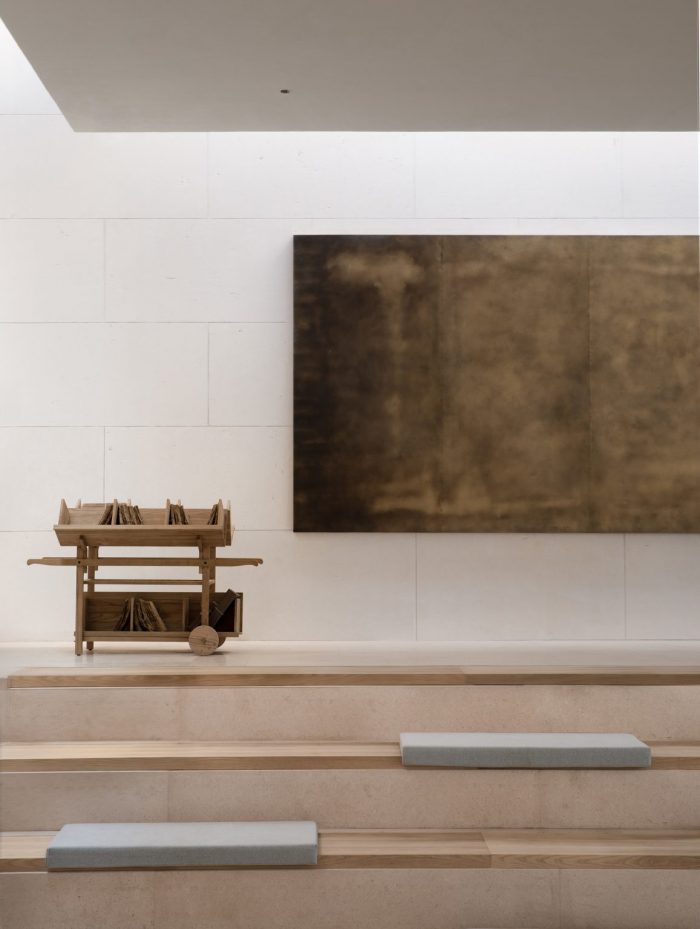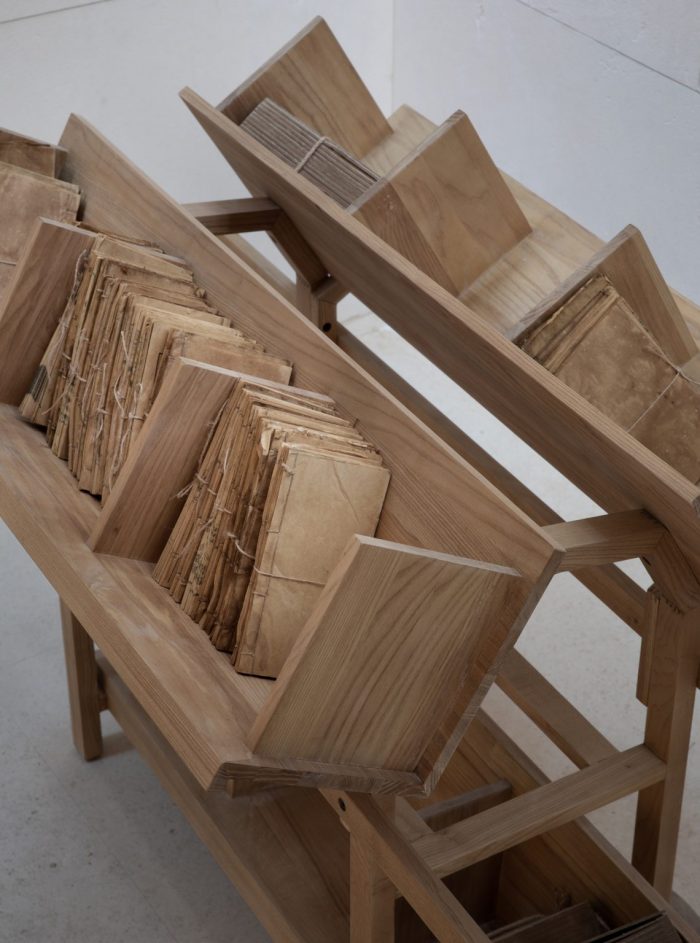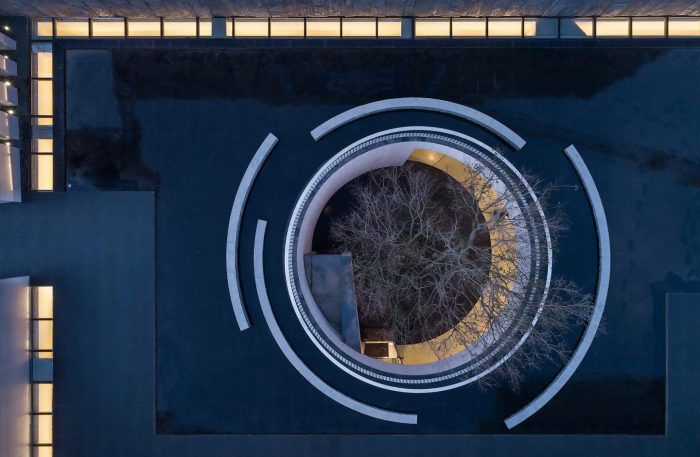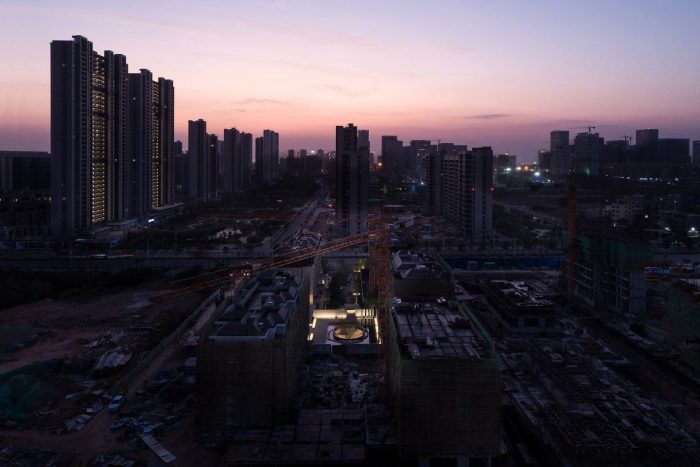上海和台北建筑工作室Waterfrom Design 在厦门设计了一个安静的茶馆,部分隐藏在地下。这个多功能的建筑是享受茶的简单乐趣的地方,其简约和极简的现代设计引人注目。
这座两层楼的茶馆采用简单的玻璃凉亭的形式,部分位于地下,周围环绕着人造湖。建筑是多用途的;目前,它的目的是准备和提供茶水,同时还可以充当销售办公室;但有望在不久的将来成为社区中心。地面上方的入口处设有接待处和茶道区。在这里,一张长有空腔的桌子允许水流过,然后轻轻地落入外面的湖中。这条小溪使人联想起古老的河流,在房间中营造出宁静的氛围,增添了空间的总体宁静感,并增强了客户的购物体验。楼梯将接待大厅连接到宽敞的地下室,一个由不同区域组成的直观空间,可以进行不同的活动:一个带服务台和桌子的用餐区,一个带书架的阅览区,一个用于演讲的休息区和一个展览区。宽敞的中庭环绕着一棵老树,那棵老树站在室外庭院的中央,一直延伸到天空。该树是社区的象征,让人想起在厦门树下聚在一起进行厦门村民对话和交流的习惯。较低地面上的广阔空间意味着无压力的空间,远离现实和地面上城市的喧嚣。在这里,日程安排被遗忘了,时间放慢了,游客重新认识了生活的节奏。还有一个展览空间。宽敞的中庭环绕着一棵老树,那棵老树站在室外庭院的中央,一直延伸到天空。该树是社区的象征,让人想起在厦门树下聚在一起进行厦门村民对话和交流的习惯。较低地面上的广阔空间意味着无压力的空间,远离现实和地面上城市的喧嚣。在这里,日程安排被遗忘了,时间放慢了,游客重新认识了生活的节奏。还有一个展览空间。宽敞的中庭环绕着一棵老树,那棵老树站在室外庭院的中央,一直延伸到天空。该树是社区的象征,让人想起在厦门树下聚在一起进行厦门村民对话和交流的习惯。较低地面上的广阔空间意味着无压力的空间,远离现实和地面上城市的喧嚣。在这里,日程安排被遗忘了,时间放慢了,游客重新认识了生活的节奏。较低地面上的广阔空间意味着无压力的空间,远离现实和地面上城市的喧嚣。在这里,日程安排被遗忘了,时间放慢了,游客重新认识了生活的节奏。较低地面上的广阔空间意味着无压力的空间,远离现实和地面上城市的喧嚣。在这里,日程安排被遗忘了,时间放慢了,游客重新认识了生活的节奏。
Shanghai and Taipei architecture studio Waterfrom Design has designed a tranquil teahouse partially concealed below ground floor in the bustling city of Xiamen, China. A place to enjoy the simple pleasure of tea, the multipurpose building strikes for its simplicity and minimal contemporary design.
The two-story teahouse takes the form of a simple glass pavilion partly underground, and is surrounded by a man-made lake. The building is multipurpose; currently, it is destined for the preparation and serving of tea, while also functioning as a sales office; but it is expected to serve as a community centre in the near future. The entrance space above ground features a reception desk and an area for tea ceremonies. Here, a long table with a cavity allows water to flow across it, before gently cascading into the lake outside. A reminder of old rivers, the stream instills a quietness in the room, adding to the general sense of peacefulness of the space and enhancing the customer’s shopping experience. A staircase connects the reception hall to a spacious basement, an intuitive space composed of different zones for different activities—a dining area with a serving counter and tables, a lounge space with bookshelves for reading, a seating area for lectures, and an exhibition space. The expansive atrium circles around an old tree, which stands in the centre of an outdoor courtyard and stretches out to the sky. The tree functions as a symbol of community and recalls the old habit of gathering under it for conversations and exchanges for Xiamen villagers. The vast room on the lower ground is meant to be a stress-free space, a retreat from reality and the bustle of the city on the ground. Here, schedules are left behind, time slowed down, and visitors reconnected to the rhythms of life.
茶不仅是重要的传统,还是厦门古老文化的精髓。喝茶被认为是一种舒缓身心,释放精神的姿态。为了实现这种解放感并反映茶馆的故事,室内采用了简单的设计语言,没有过多的装饰,无可挑剔地证明了少即是多。整个空间融合了温暖的自然元素,包括铜,杉木,石头和藤条,共同营造出独特的宁静氛围。玻璃窗将充足的自然光引入最小的室内,补充了柔和的空间氛围。结果是为茶迷和村民提供了一个私密的空间,一个对话的空间,人们可以聚在一起并围绕茶的乐趣建立关系。
Tea is not only an important tradition but the very essence of old Xiamen culture; drinking it is considered a gesture of soothing your mind and freeing your spirit. To achieve this sense of liberation and reflect the narrative of the teahouse, the interior embraces a simple design language, devoid of excessive decorations, impeccably demonstrating that less is more. Warm natural elements including copper, fir wood, stone, and rattan, are incorporated throughout the spaces, together creating a distinctive tranquil ambience. Glass windows bring abundant natural light into the minimal interior, complementing the soft spatial atmosphere. The result is an intimate space for tea-lovers and villagers to enjoy—a space for dialogues, for people to come together and build relationships around the pleasure of tea.
Design:Waterfrom Design
Photograph:Yuchen Chao

